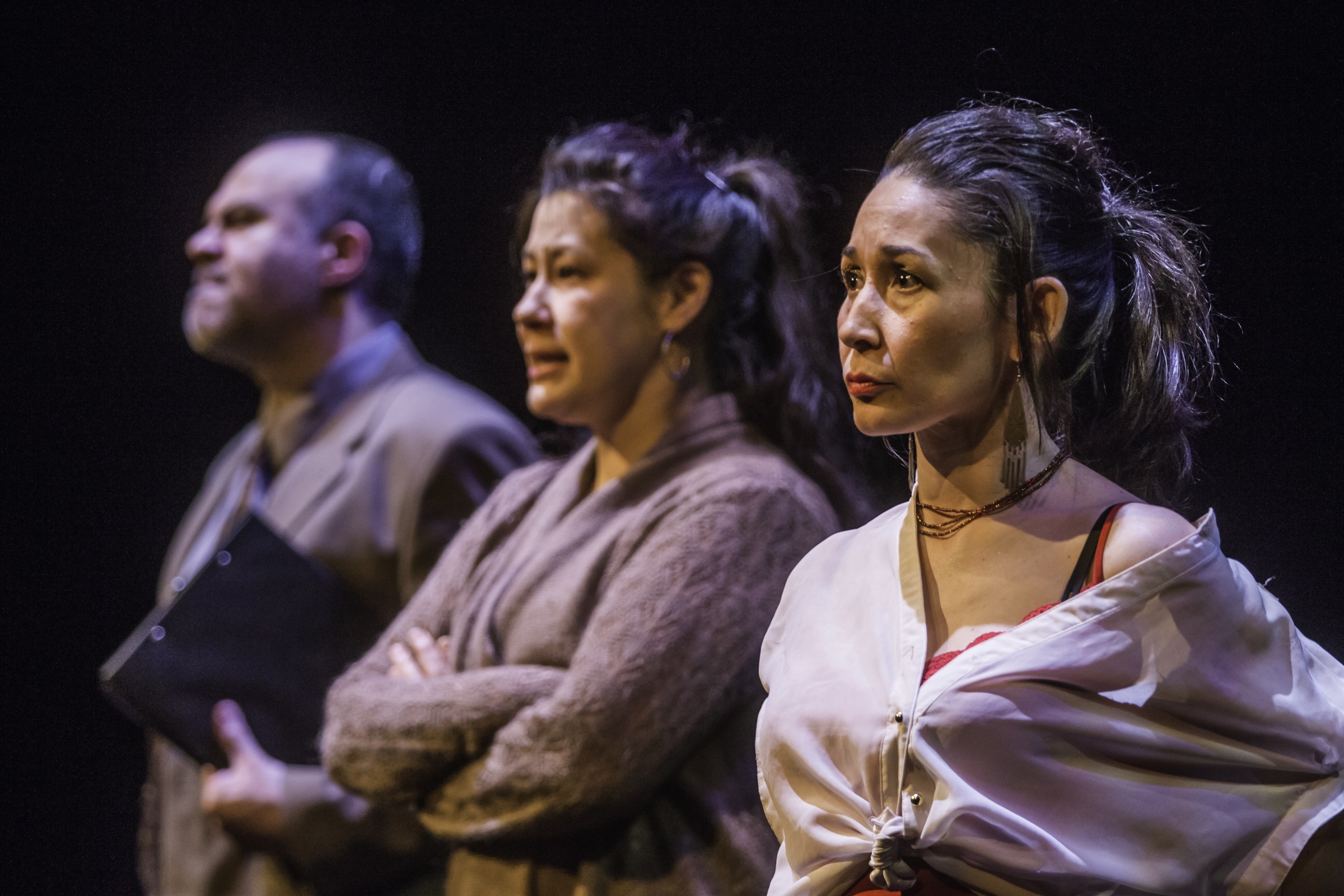Warning: This article contains descriptions of violence against Indigenous women.
Art is often assumed to be a reflection of our times, manifesting the problems that pervade beneath the surface of our society and motivating art admirers to dig deeper. This is exactly what Imago Theatre’s production of Pig Girl did to its audience at Centaur Theatre for a full hour and a half on February 4, having first appeared on Montreal’s stage in late January. Pig Girl is an enthralling and distressing story that captivates the audience, exposing them to the issue of violence against Indigenous women in Canada – a topic which still remains largely ignored.
The play is loosely based on a series of crimes committed by Robert Pickton in the 1990s in British Columbia. Pickton, a pig farmer, murdered several sex workers, many of whom were Indigenous women. Colleen Murphy, the playwright, uses the reference as a starting point, addressing violence against marginalized women by alluding to this horrific instance in Canada’s past.
The production’s initial reception in Edmonton in 2013 was controversial. Some members of Indigenous communities felt it was too soon for the family members of victims to see past traumatic events enacted on stage and questioned Murphy’s right to tell the story as a non-Indigenous person. However, Murphy has since made it clear that her intention is to educate audiences about the dangerous position Indigenous women occupy in Canadian society.
Pig Girl pits misconceptions about gendered violence toward Indigenous women with the reality and pervasiveness of these crimes through the characters’ stories. The play consists of only four characters: the Dying Woman, the Killer, the Sister, and the Police Officer. Two narratives are shown simultaneously throughout the play – on the one hand the Dying Woman fights the Killer, and on the other, the Sister confronts the Police Officer. The audience follows the intertwined events of the Dying Woman fighting her killer and the Sister confronting the Police Officer, who fails to find her family member over the span of several years.
Murphy’s storytelling leads the audience to a developed understanding of these characters through their reflective monologues. For instance, the conversations between the two sisters and the descriptions of their shared experiences showcase their fundamental connection to each other.
Pig Girl’s cast masterfully conveys the characters’ complex lines, each of them at times displaying strength and vulnerability that elicits empathy from the audience. The Dying Woman’s stream of childhood stories and the Police Officer’s confession about his reasons for joining the force are essential to understanding this multidimensional and complex issue. Embedding personal narratives in the play makes the viewers ponder how these characters have found themselves in their circumstances. Personal accounts also carry an underlying theme of pleading to be heard, acknowledged, and helped.
The set design consists of four separate dirt graves located within a triangular wood in planked structure. It is angled toward the audience, with each character standing on a separate grave. The scenery is effective in demonstrating the isolation and harshness of the characters’ experiences.
Pig Girl forces the audience to question and reframe their preconceived notions about Indigenous women in Canada. This is achieved through director Micheline Chevrier’s decision to have all the actors face the audience throughout the performance, even during dialogue.
Art is often assumed to be a reflection of our times. It also is supposed to force audience members to have conversations that they are afraid to have. This is what Pig Girl attempts to do through artistic expression. The play’s powerful voice encourages us as a society to take steps to address the national issue of missing and murdered Indigenous women by advancing national inquiry of the matter and, most importantly, recognizing Indigenous women’s lives just as much as any other.

